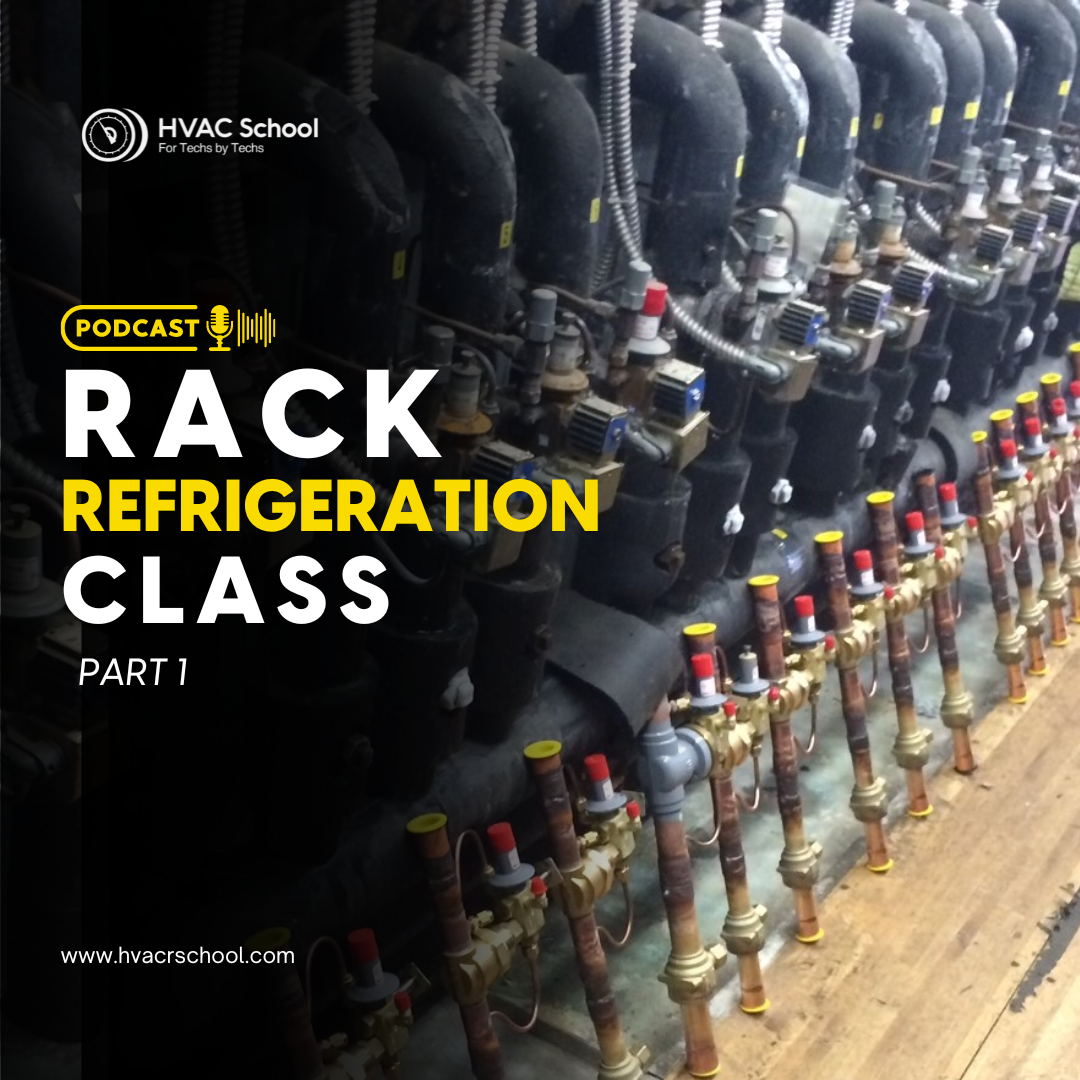Rack Refrigeration Class – Part 1

This podcast episode is Part 1 of a Kalos class on rack refrigeration given by Matthew Taylor. This first segment focuses on the basic refrigerant circuit and oil management of a parallel rack system, common in market refrigeration.
Parallel racks follow the same general process as any other compression refrigeration system. However, they contain multiple compressors on a single rack. These systems have multiple suction lines that tie into one single suction header that feeds into multiple compressors. The suction side of the piping is usually a long distance with varying elevations; risers are vertical stretches of piping that carry oil and refrigerant up and pose a challenge for oil return.
The compressor takes low-pressure vapor on the suction side and turns it into high-pressure vapor on the discharge side. From there, the condenser rejects heat from the refrigerant, which brings the superheated vapor down to saturation temperature and further rejects heat to make the refrigerant fully liquid (subcooled). Metering devices drop the pressure of the refrigerant, and the cases contain evaporators that absorb heat and boil off refrigerant, which travels to the compressors via the suction lines.
Parallel racks come in multiple varieties, but the ones in this podcast are of the direct expansion (DX) variety. Saturation remains a critical principle in these systems: superheat, subcooling, and the pressure-temperature relationship all drive system operation.
Matthew also covers:
Have a question that you want us to answer on the podcast? Submit your questions at https://www.speakpipe.com/hvacschool.
Purchase your virtual tickets for the 6th Annual HVACR Training Symposium at https://hvacrschool.com/Symposium25.
Subscribe to our podcast on your iPhone or Android.
Subscribe to our YouTube channel.
Check out our handy calculators here
Author:










Comments
To leave a comment, you need to log in.
Log In